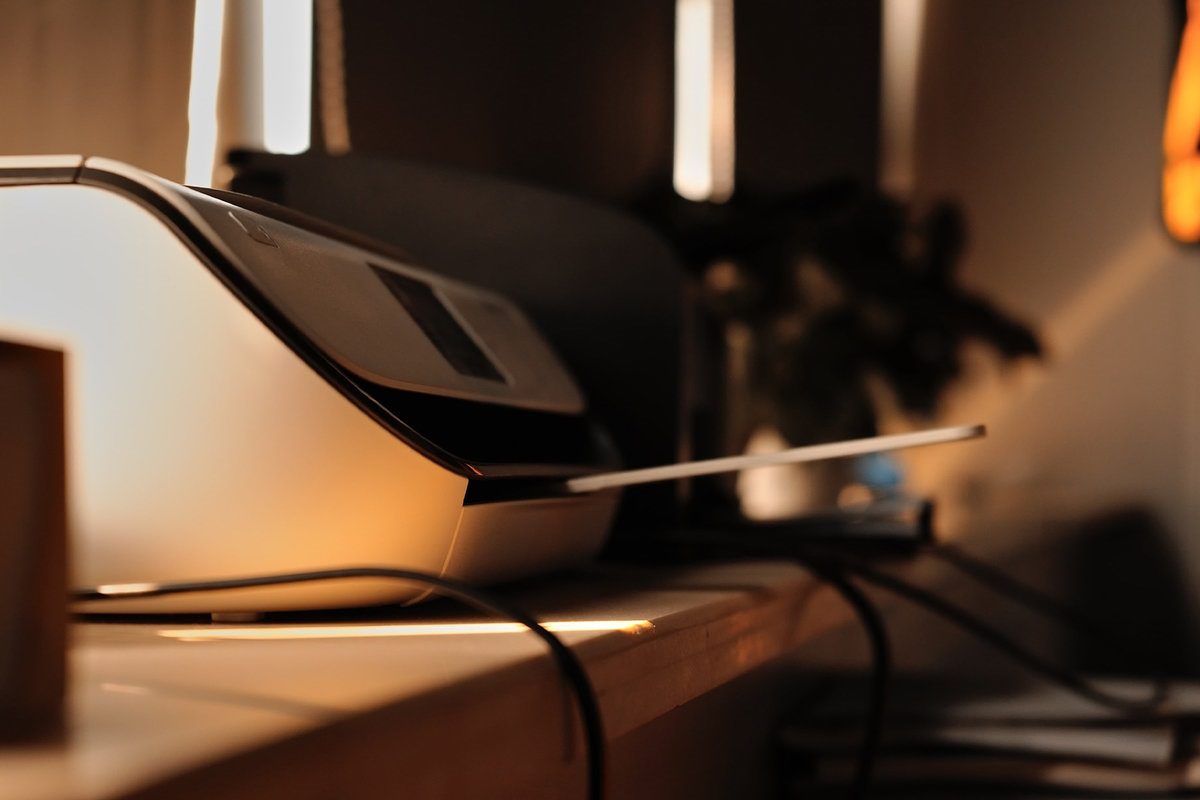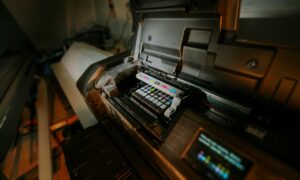Are you having trouble choosing the right printer? No worries! In this buying guide for printers, you’ll learn what to consider and how to choose the best printer for you.
When buying a printer, it may seem overwhelming, because nobody knows which printer is right for them. Especially, if you are a beginner or a non-tech person, deciding from the myriad of options available on the market can be extremely challenging. As you evaluate all the options on the market, you may feel like you’re in a bind.
A printer is like an investment since you will use it for a long time, so you should choose one that is right for your needs and fits best within your budget. For your convenience, we’ve put together a handy buying guide for deciding what kind of printer to buy as well as recommendations for most buyers.
What Kinds Of Printers Are Available In 2022?
Types of Printers:
In today’s market, there are many different types of printers, ranging from basic models to high-speed powerhouses.
1. Inkjet Printers
As its name implies, an inkjet printer prints by spraying a small amount of ink directly into the paper. These printers are compact, lightweight devices. You can use them to print text, graphics, and images on a variety of media types and sizes, including cardstock, business cards, posters, and more. In addition, beginners find it easy to use these printers for sublimation printing.
2. Laser Printers
Laser printers are specifically designed to handle a large volume of printing while maintaining a low cost per page. Laser printers have the same technology as copy machines in that they transfer images and text using static electricity rather than ink. To save even more money, you can choose a printer that prints only black documents if you know you’ll only print text documents.
3. Supertank Printers
With supertank printers, you print more and change fewer cartridges because the high-capacity cartridges save you time. Moreover, Some printers require no ink at all for up to two years, while others use refillable bottles.
4. Photo Printers
Photo printers make it possible for you to get professional-looking photos at an affordable or even cheaper cost than a print shop. Apart from the convenience of being able to print photos right away, one of the biggest advantages of photo printers is that you no longer have to go to the store or wait for them to arrive via postal service.
Whether you want to print 4″ x 6″ photos, scrapbooking pictures, CD and DVD covers, or anything else, a photo printer can help you express your creativity. Likewise, with compact, portable photo printers, you can also easily share small photos wherever you go.
5. Multifunctional Printers
Besides printing, multifunction printers can also scan and fax documents. They are typically called “all-in-ones” or multifunction printers (MFPs) and are available both in inkjet and laser varieties.
An all-in-one printer and scanner is not only a lot cheaper than buying a printer and a scanner separately, but it will also save you a lot of space in your home. For home users, we highly recommend all-in-ones because they are extremely common, and you do not have to pay a lot for them.
6. Printer For Cricut Machine
Printers with Circuit machine is a lethal combination for creative minds. You get more quickly and this combination also boosts creativity for Dyers. So, if you are a habitual crafter or a professional in the crafting business, you would love to know the best compatible printers with Circuit Machine.
Cricut maker and explore air are compatible printers and cut functions executed through any printer. However, Cricut joy does not support the print then cut feature. Almost all types of printers work best with a Cricut Maker. An inkjet printer from brands like Epson or HP will work fine with Cricut Machine. Even sublimation printers work great in combination with Cricut Machine.
Features to consider when purchasing a new printer – Buyer’s Guide
Printer Use:
When purchasing a printer, it is imperative to consider what it will be used for. If it will be for home use, or if it will be for business use, always think about its purpose first.
For instance, work-related printers ( professional printers) are capable of handling any project. They are quite costly as well. On top of that, they are incredibly precise and accurate. In comparison, home printers are relatively cheap printer models. Their printing quality isn’t exceptional, but they’re sufficient for the purposes of printing.
Print resolution:
The resolution of the printer determines the quality and sharpness of the prints. In short, a higher resolution means better prints overall. Therefore, you should consider first what kind of media and content you will print (document or image) before choosing your printer resolution.
Printing speed:
Printers are distinguished by their print speed, which is measured by pages per minute (ppm) and varies considerably between types. Smaller, low-volume devices may only print 5 pages per minute, while larger, higher speed devices may print 70 pages per minute or more in almost any format.
The smaller and more affordable device will probably not disappoint you if you only print single-page documents from time to time. But If you’re a business user or professional, you should look at ppm (page per minute) numbers to determine which printer is best for your needs. The faster the printer, the faster you can complete your tasks.
Color or Black and White:
Monochrome printers or printers in black and white are better choices if you mostly print plain, colorless documents, while color printers are best for printing graphics and images. Moreover, printing in color versus printing in black-and-white generally involves a different print speed on many printers.
Ink & Toner:
When you consider how much printer ink is used for routine maintenance, it may be one of the most pricey liquids you purchase. Therefore, when selecting a printer, it’s wise to consider the replacement costs and the average amount of printing you’ll do.
In our opinion, buying tank printers (Specifically Epson Ecotank series printers) is the most cost-effective solution. Instead of using expensive cartridges, tank printers use refillable reservoirs filled with ink replenished from a bottle. Moreover, These models prove to be more economical than an inkjet printer.
Connectivity options:
A wide variety of connectivity options are available on today’s printing devices. Nowadays, almost every printer supports basic Wi-Fi and cloud printing. However, some projects may require alternative connections.
USB Slot: Usually, printers have USB connections, and the USB-A standard is the most common. The printer allows you to connect external hard drives and other devices and then print files directly from the printer’s menu screen. Although USB-C connections haven’t been widely adopted yet, most home printers will support this in the near future.
SD Card Slot: It is useful for photographers to use printers that have SD card slots so they can print images directly from SD cards.
Ethernet: Ethernet ports are also available for wired internet connections on some printers. However, printer data requirements are relatively simple, and wired Ethernet connections are seldom necessary for home printers (they can be more useful for office printer setups).
Wi-Fi: Almost all printers have a built-in Wi-Fi adapter. You will usually need to input your network information to use it. If you have a computer, phone, or other device, you can download software to direct print jobs directly to the printer; no cable is needed. It’s a convenient and easy way to print at home. A Wi-Fi connection can also be used for remote printing from a home computer to an office, which can be extremely valuable for work-at-home workers.
Wi-Fi Direct: Wireless Direct allows you to connect to the Internet over a peer-to-peer network that is not connected to your network. When you use Wireless Direct, the printer will connect to the device directly through the secure signal established. As is the case with Apple’s AirPrint, Wi-Fi Direct is the preferred method for connecting, and other platforms also support similar technologies.
NFC: Some printers also support NFC (near-field communication), which lets you connect your device to your printer by simply touching it to a specific spot on the printer.
Cloud printing: Many full-featured printers, including all-in-ones, offer online access to images stored on social media sites such as Facebook, Flickr, and Dropbox. But you can’t use these services or print to the printer using a smartphone or tablet if your printer isn’t connected to the internet.
Energy efficiency:
Choosing printers with better energy efficiency statistics will help you reduce your monthly costs. The most energy-efficient models will have the ENERGY STAR®, EPEAT®z, or CECP certifications.
Warranties :
Lastly, ensure there is a warranty on the printer you buy. Printers typically come with warranties ranging from 1 to 5 years. Needless to say, longer warranties are always better. Also, make sure the warranty covers replacement parts.
Conclusion:
After reading this buying guide for printers, I hope you have a better understanding of the question “What printer do I need?”. However, in summary, laser printers are better for larger offices and homes with frequent printing. For someone working from home and printing less frequently, an inkjet printer is a better choice. A super tank printer is a perfect solution for those using sublimation printing and photo booths.



































